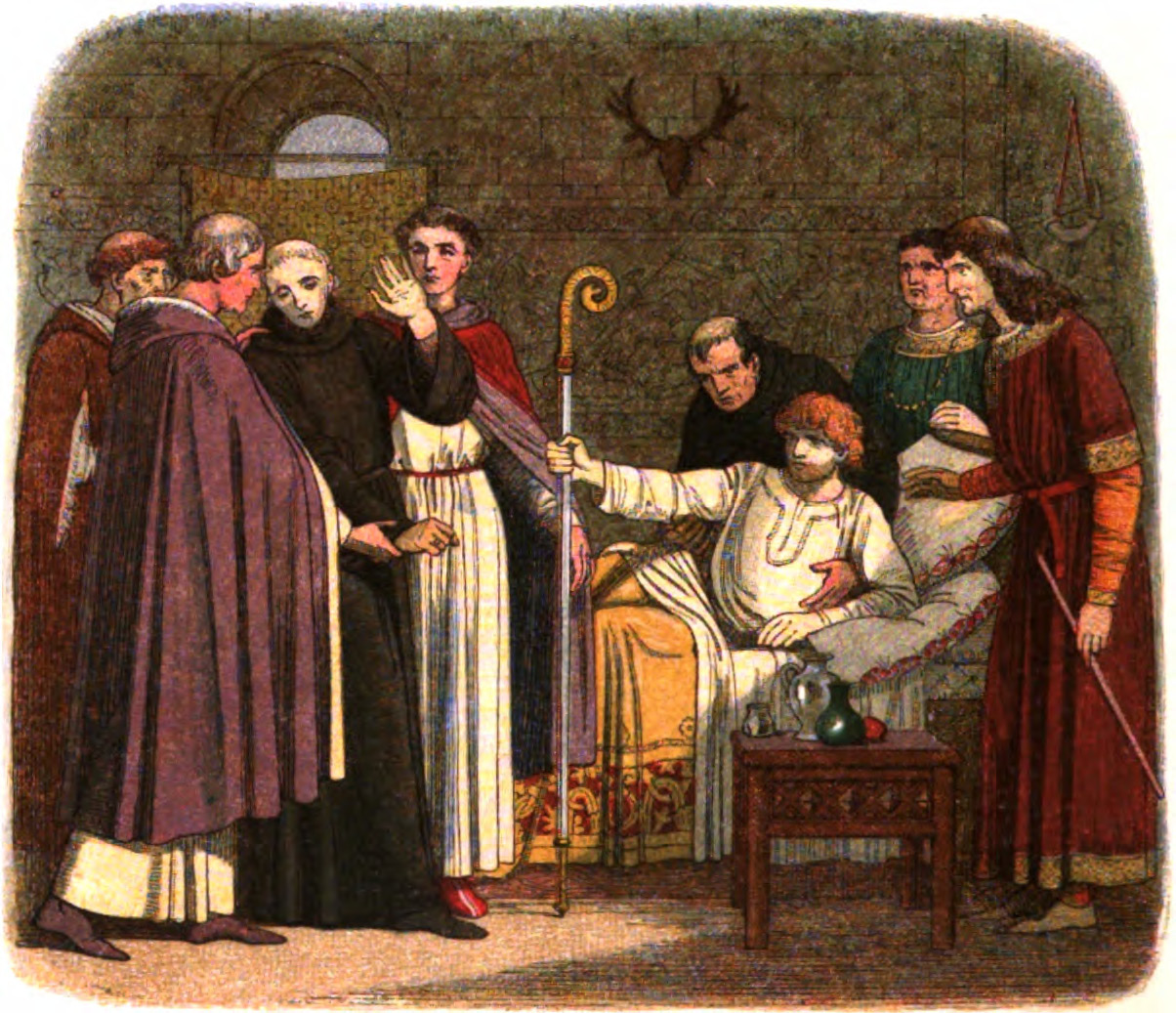St Anselm of Bec
Anselm (1033-1109) was Archbishop of Canterbury during the intense, and often deadly, struggle between an ambitious papacy and national monarchies known as the Investiture Controversy. He was also one of the leading theologians of the Middle Ages, responsible for important propositions in Atonement Theory and proof for the existence of God.
Anselm was born in southern France and became a Benedictine monk at the rather advanced age of 27. He distinguished himself quickly and rose to be prior and then abbot of the monastery at Bec in Normandy, which he made a centre of learning. While visiting England the see of Canterbury came open and he was pressured by English clerics and the king, William II “Rufus”, to take up the post. This Anselm did in 1093 but with much reluctance (see above), probably foreseeing the difficulties he would have with a greedy and headstrong ruler.
Anselm tried to institute church reforms, such as insisting on clerical celibacy and curbing simony, the buying and selling of church offices, but he was caught up in political struggles between King William and the papacy. William insisted on the traditional rights of naming high-ranking English clergy to their positions and of appropriating church funds while Anselm defended the claims of the papacy to nominate bishops and archbishops and to pay no taxes unwillingly. The resulting brouhaha saw Anselm go into exile on two occasions before a shaky compromise was reached and he was allowed to return to his archdiocese.
Anselm’s greatest fame comes from two theological works. In the first, the Proslogion, he advanced what became known as the Ontological Argument for the existence of God. It is a simple but profound assertion:
God is a being than which a greater cannot be thought. Because we can conceive of such a being, this being exists in our minds. To exist in reality is greater than to exist only in the mind. Thus, if we think of God as existing only in the mind, we can think of something greater than God. But God is that than which nothing greater can be thought. It follows, then, that God exists in reality as well. In fact, it is incoherent to suppose that that than which nothing greater can be thought exists only in the mind.
Philosophers are still threshing out their thoughts on this simple paragraph and there exists an academic cottage industry around Anselm’s argument.
His second great contribution to medieval theology came with his presentation of the “satisfaction view” of the Atonement in Cur Deus Homo? or “Why did God become man?” In his Introduction, Anselm says:
From the theme on which it was published I have called it Cur Deus Homo, and have divided it into two short books. The first contains the objections of infidels, who despise the Christian faith because they deem it contrary to reason; and also the reply of believers; and, in fine, leaving Christ out of view (as if nothing had ever been known of him), it proves, by absolute reasons, the impossibility that any man should be saved without him. Again, in the second book, likewise, as if nothing were known of Christ, it is moreover shown by plain reasoning and fact that human nature was ordained for this purpose, viz., that every man should enjoy a happy immortality, both in body and in soul; and that it was necessary that this design for which man was made should be fulfilled; but that it could not be fulfilled unless God became man, and unless all things were to take place which we hold with regard to Christ.
Anselm dedicated his working life to fides quaerens intellectum (“faith seeking understanding”) and, following Saint Augustine, asserted credo ut intelligam, “I believe so that I may understand.”
